How to Remove Stubborn Spills and Stains From Your Granite Countertops
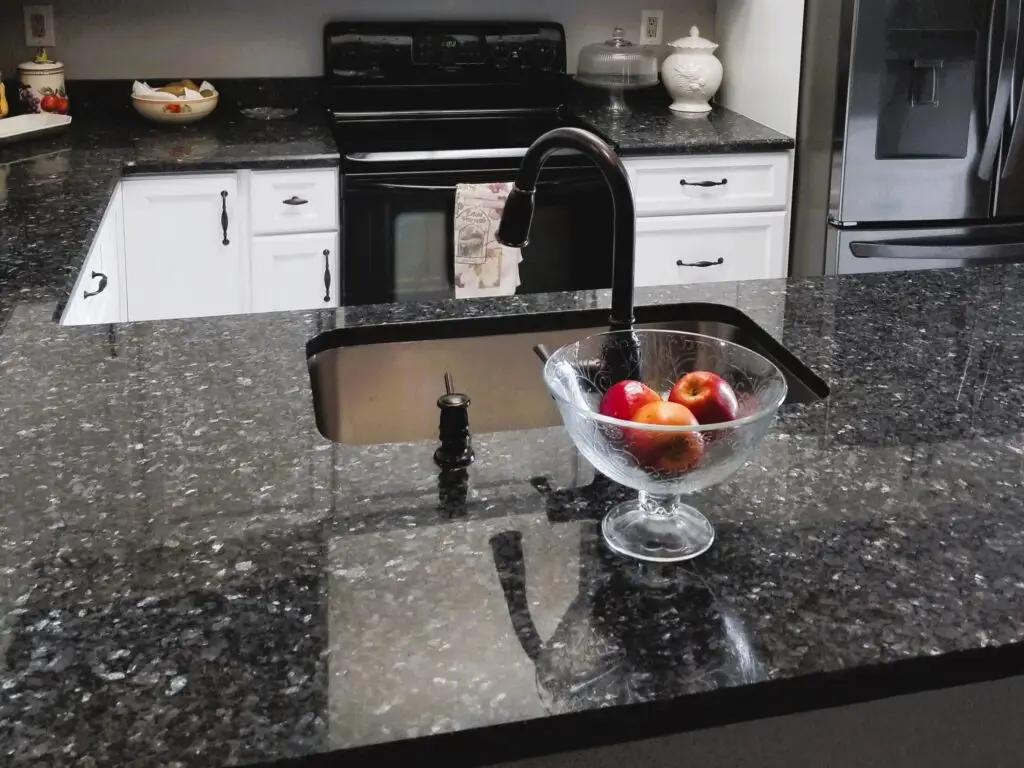
When you hear “granite stain,” you might imagine a permanent mark that can’t be removed. But as a homeowner, you’ll be happy to know that what looks like a stain is actually just a liquid trapped in the natural crevices of the stone. Fortunately, this means it can be removed. The key is to draw the liquid out, not to “scrub” it off. This simple, four-step process will help you restore the beauty of your granite countertops.
While the photos both above and at the end of this article are real projects we’ve completed, for the following step-by-step guide, we’ve used clear, AI-generated illustrations to help you visualize each stage of the process.
What You’ll Need to Get Started
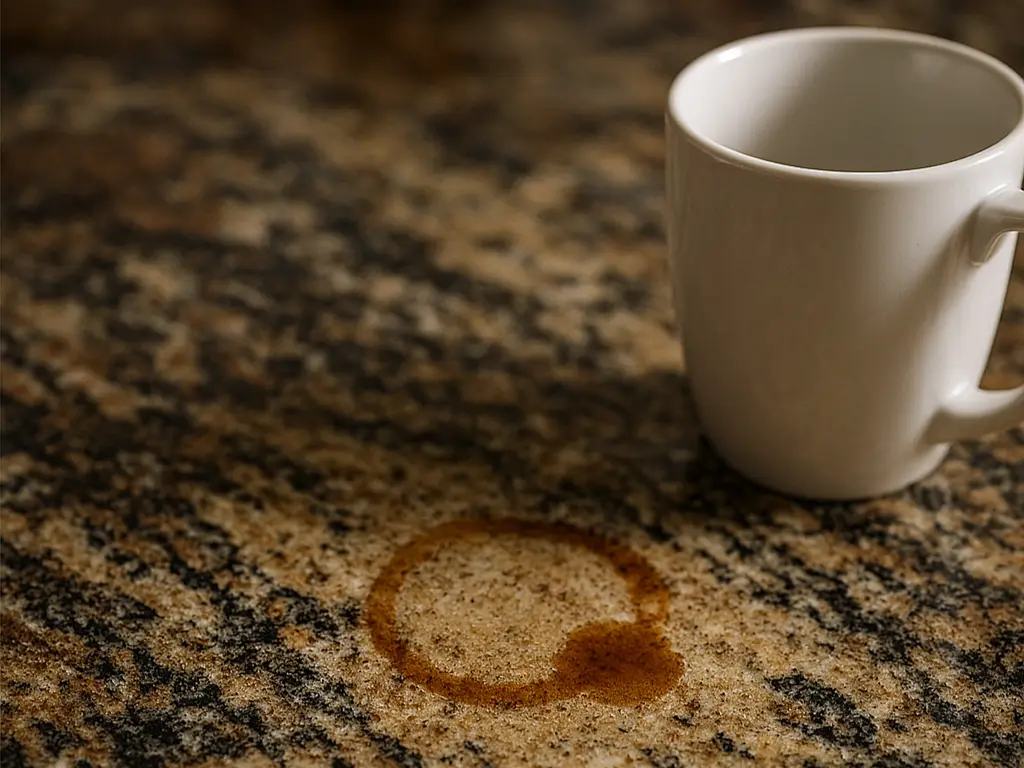
Before you begin, gather these four essential items:
- An Absorbent Medium: This will form the base of your stain-removing paste. Baby powder or corn starch work well because they are highly absorbent and won’t damage the stone.
- A Chemical Agent: This is the active ingredient that will help break down the specific type of spill. It’s critical to choose the correct agent for the job.
- Plastic Wrap: A simple square of plastic wrap, larger than the stained area, will trap the paste and the chemical fumes, ensuring the process works efficiently.
- Masking Tape: You’ll use this to securely seal the plastic wrap to the countertop, preventing the paste from drying out prematurely.
Step 1: Choose the Right Chemical Agent for Your Stain
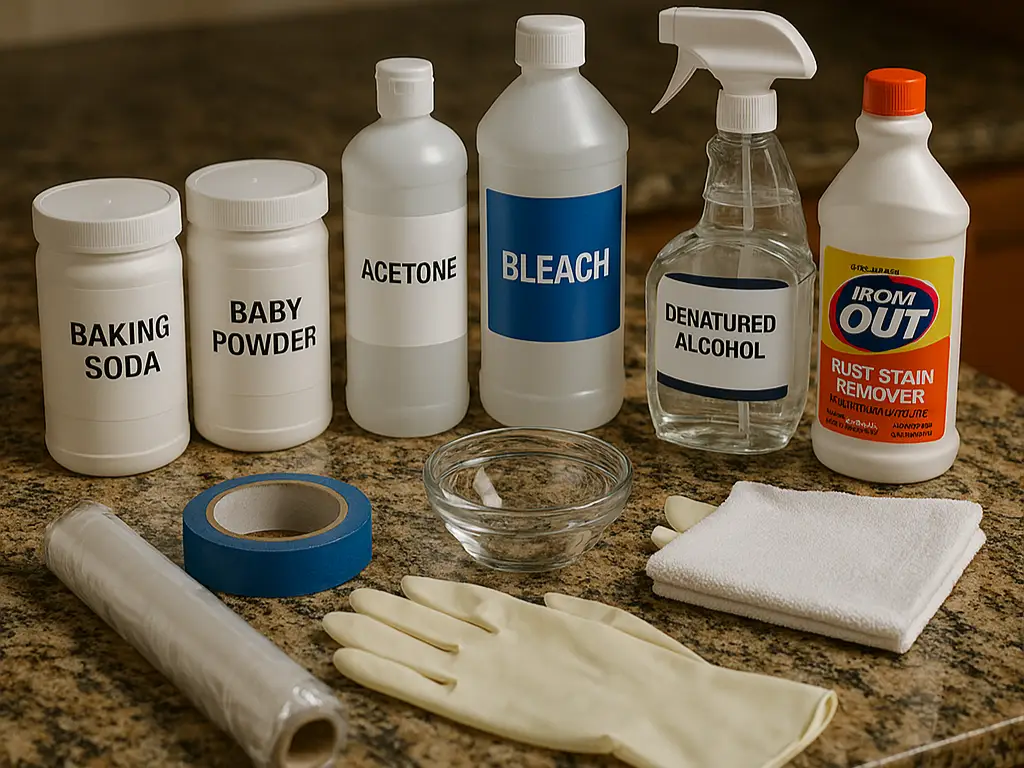
The first step in removing a stain from granite is identifying the type of spill. You will need a different chemical agent depending on the source of the stain:
- For Food-Related Stains: Use a high-concentrate hydrogen peroxide (at least 12%). This is perfect for coffee, tea, fruit juices, and other organic spills.
- For Oily Stains: Acetone is your best friend here. It effectively tackles cooking oils, salad dressing, butter, and other greasy messes.
- For Mold or Mildew: A simple bleach solution (1 part bleach to 1 part water) will work wonders on these common household culprits.
- For Rust: Iron-Out is a specialized product that is highly effective at removing rust stains without damaging the granite.
- For Inks and Dyes: Denatured alcohol is an excellent choice for stains from permanent markers, ink pens, and food dyes.
Step 2: Create and Apply the Poultice
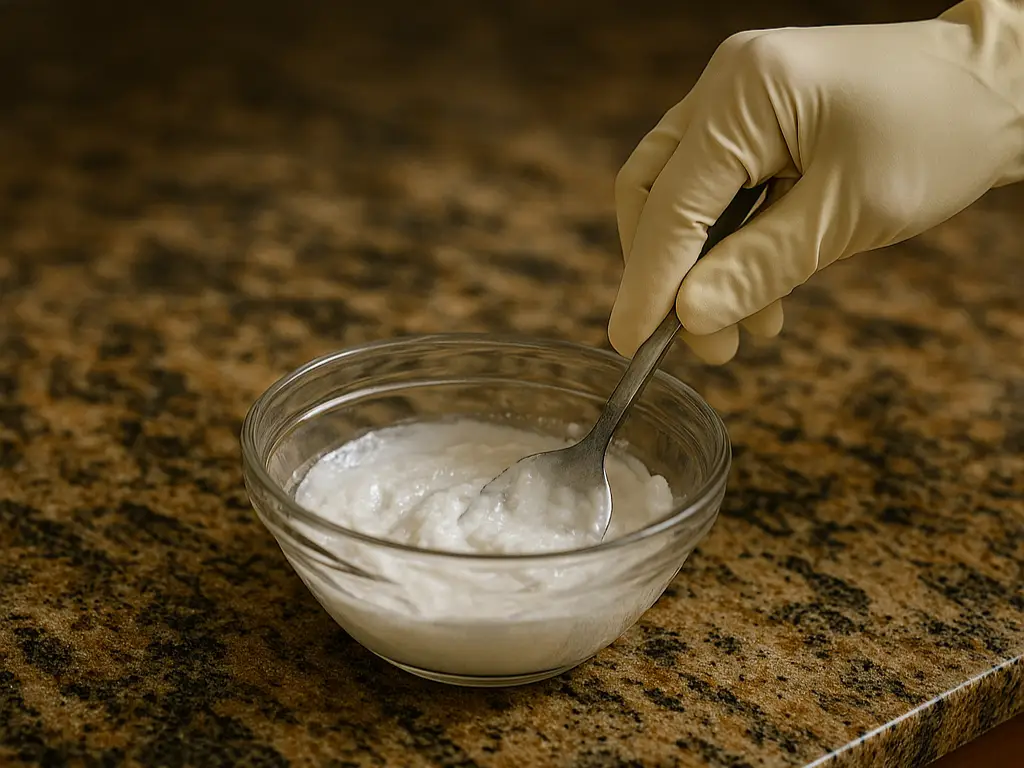
This is where the magic happens. In a small bowl, mix your chosen absorbent medium with the appropriate chemical agent to form a paste, or “poultice.” The consistency should be similar to peanut butter—thick enough to hold its shape but spreadable.
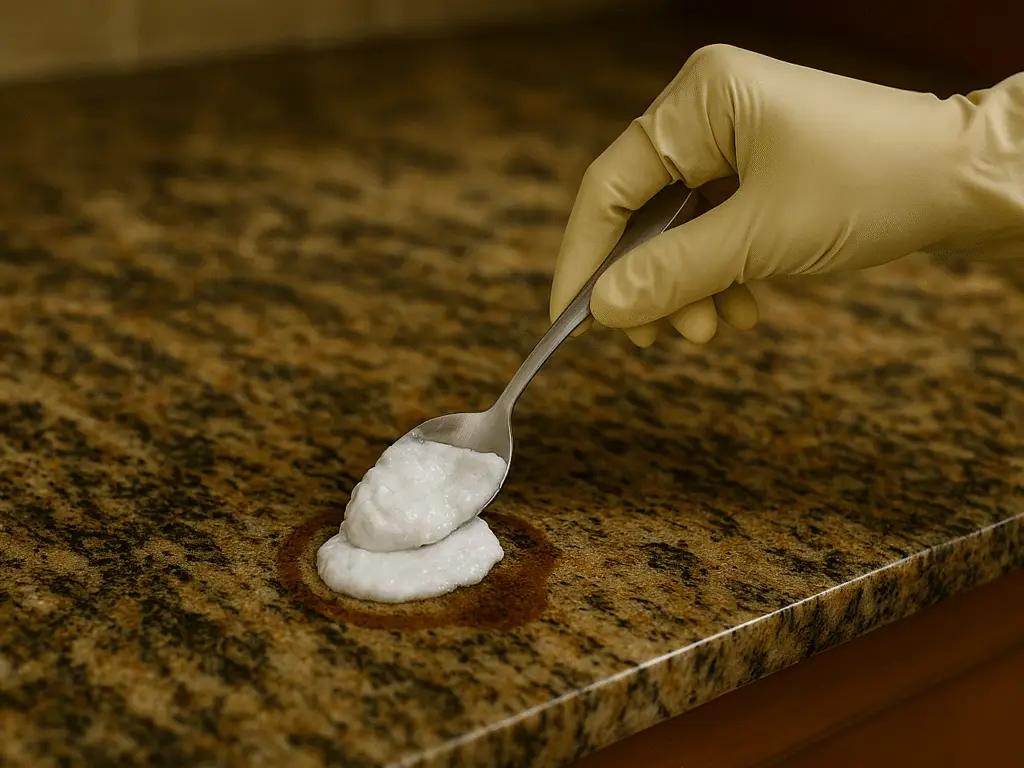
Once the poultice is ready, generously apply it over the entire stained area. It should be at least a quarter-inch thick to be effective. Make sure the paste completely covers the stain and extends slightly past its edges.
Step 3: Cover and Wait
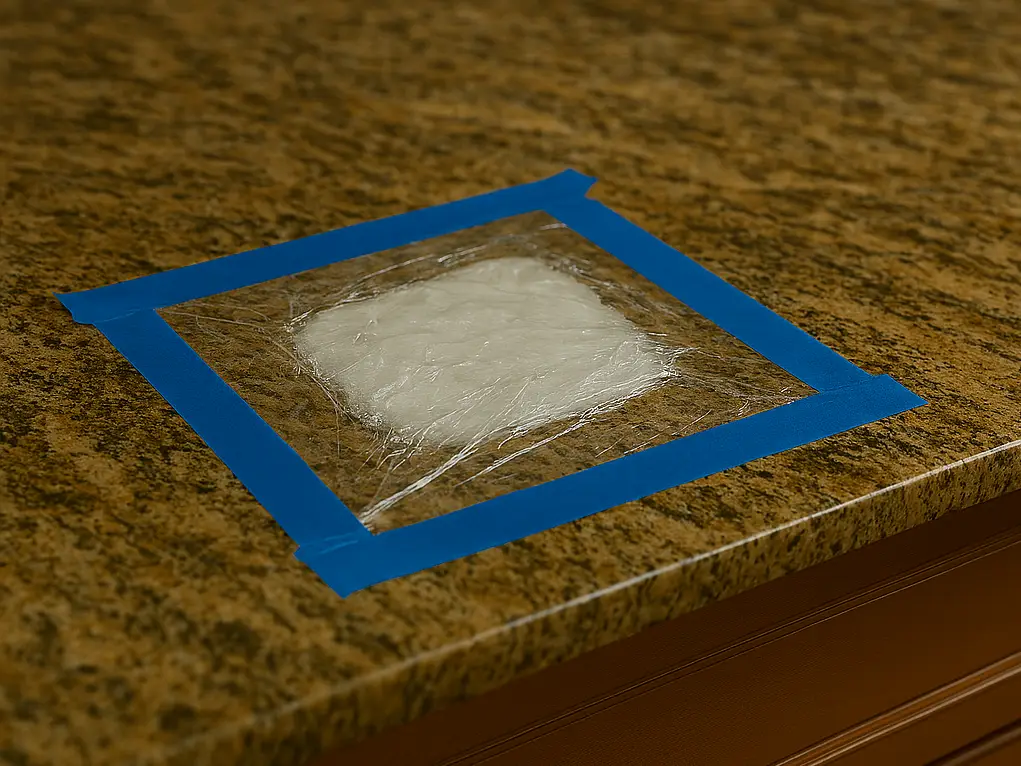
Cover the poultice with the plastic wrap and use the masking tape to seal all four sides tightly to the countertop. This creates a small, sealed environment that prevents the paste from drying out. The chemical agent will remain active, allowing it to work continuously to lift the stain.
Now, you wait. Leave the poultice in place for a minimum of 24 hours. For very stubborn or old stains, you may need to leave it for up to 48 hours. The longer the poultice is in contact with the stain, the more effective it will be.
Step 4: Dry, Remove, and Polish
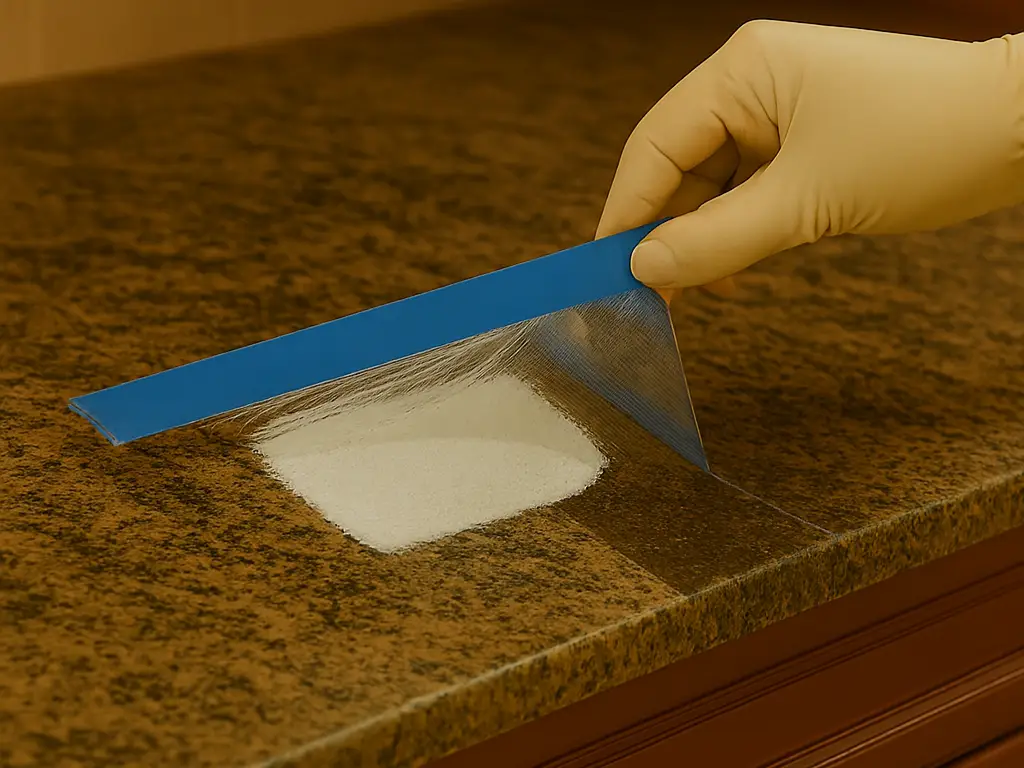
After waiting, remove the plastic wrap. The poultice will have started to dry out, a sign that it’s doing its job of drawing the liquid out of the stone. Do not remove it yet! Let the poultice dry completely for several hours until it’s a solid, dry mass. This final drying phase is crucial as the absorbent powder pulls the last bit of liquid from the stone.
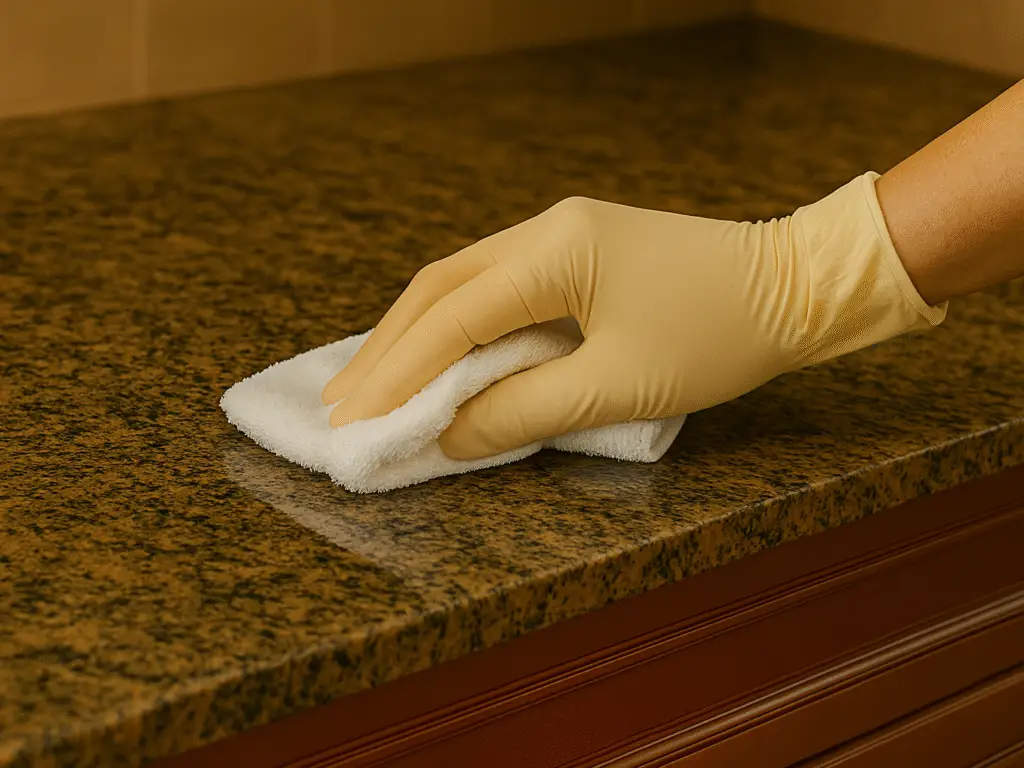
Once the paste is completely dry, you can use a plastic scraper or spatula to gently scrape it off the countertop. Wipe down the area with a soft, damp cloth and buff it dry. If the stain is still visible, don’t worry. This process is highly effective but may require a second or third application for particularly stubborn oily stains.
A Final Word on Prevention
The best way to deal with spills is to prevent them from setting in. Wipe up spills immediately, especially wine, fruit juices, and oil. For ongoing protection, consider getting your granite countertops professionally resealed every 12 to 24 months. A sealant acts as a protective barrier, making it much harder for liquids to penetrate the stone in the first place. This simple step can save you a lot of time and effort in the long run. By following these steps and taking preventative measures, you can ensure your granite countertops remain a beautiful and lasting centerpiece of your kitchen.
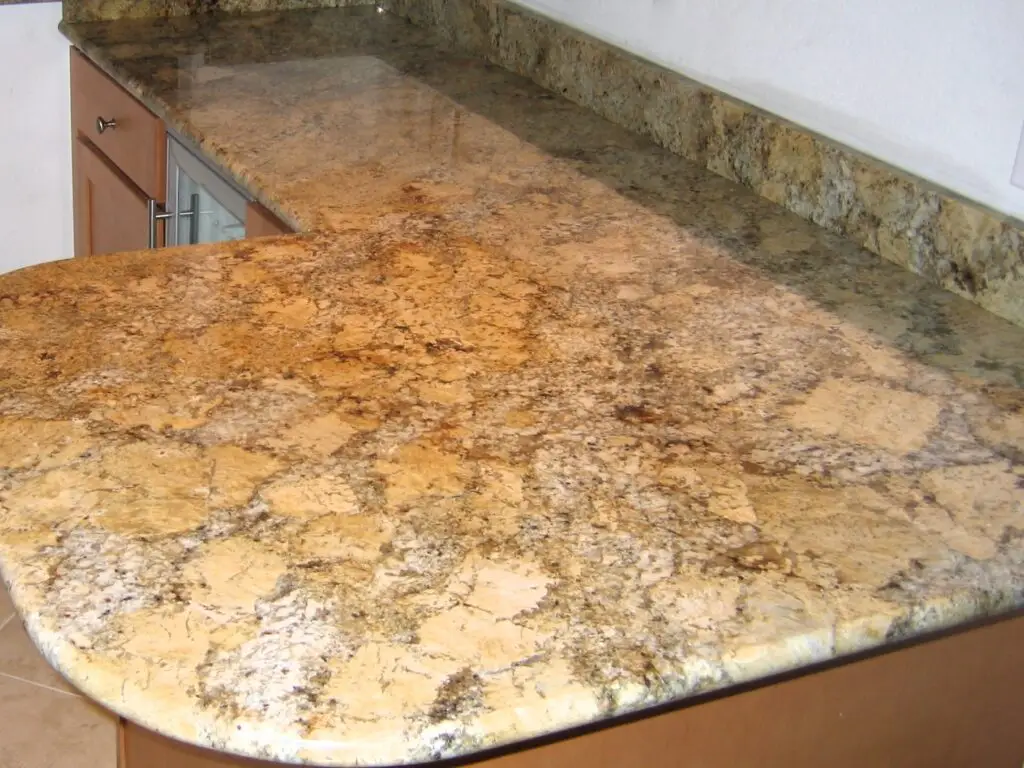
If you have other questions about your granite countertops, please contact us. We’ll be happy to help.
